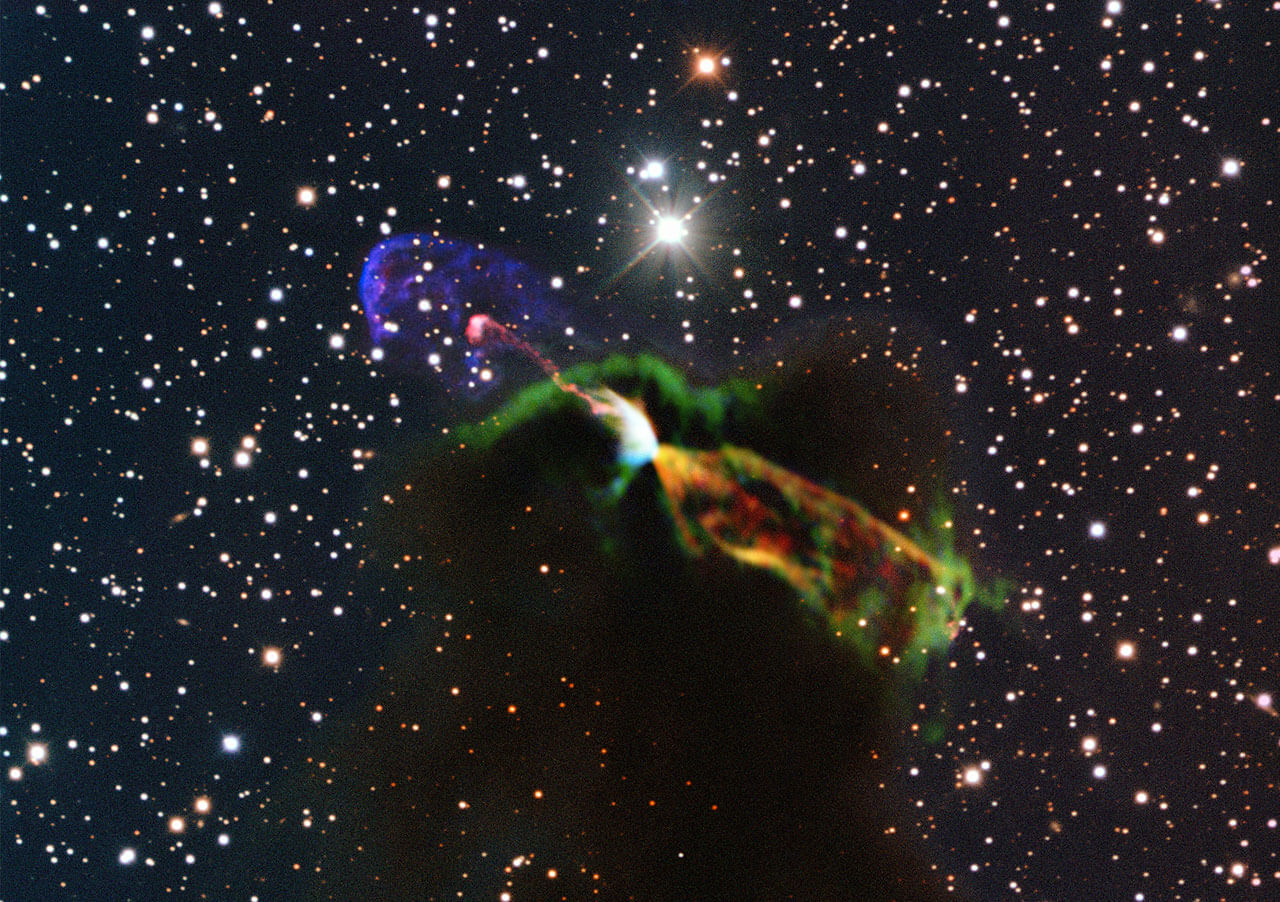An experimental telescope array in Chile has photographed the wind blowing from a new star located 1,400 light-years away from us

The Atacama Large Millimeter/submillimeter Array of telescopes belonging to the European Southern Observatory (ESO) project operated under the auspices of the European Space Agency in the mountains of Chile, managed to capture a close-up image in vivid colors of a stream of material moving away from a newborn star. By observing the glow coming from the carbon monoxide molecules from the object known as Herbig-Haro 46/47 (Herbig-Haro 46/47) they discovered that these are even more energetic jets than previously assumed. The detailed images also revealed a previously unknown jet moving in a completely different direction.
Young stars are violent objects that emit material at a speed of up to a million km/h. When these materials hit the gas surrounding the young star, the gas begins to glow as it forms what is known as the Herbig-Harrow object. A good example of this is Herbig-Haro 46/47 which is 1,400 light years from Earth in the southern group "Vela" or the Sails. This very thing was the goal of the research that made use of the Alma facility which is in the running stages, when the telescope was still under construction and the array was not yet completed.
The new image reveals fine details of two jets, one moving toward Earth and the other moving in the opposite direction. The receding jet was almost invisible in previous visible-light images, due to the masking of the dust cloud surrounding the fledgling star. Not only was Alma able to provide a much sharper image than previous facilities, but it also allowed astronomers to measure the speed of movement of luminous materials in space.
The new Herbig-Haro 46/47 observations reveal that some of the ejected material is moving much faster than previously thought. This means that the escaping gas contains more energy and momentum than previously thought.
The lead researcher, Hector Arca from Yale University in the USA explains that "Alma's high sensitivity made it possible to discover details that previously could not be seen in this source, such as the rapid distance of the material. This object is a single example that is a model for the outflow created by wide-angle winds emanating from the young star."
The picture was taken during a five-hour observation of Alma. Similar observations in other telescopes would require 10 times longer time.
For information on the Southern European Observatory website
